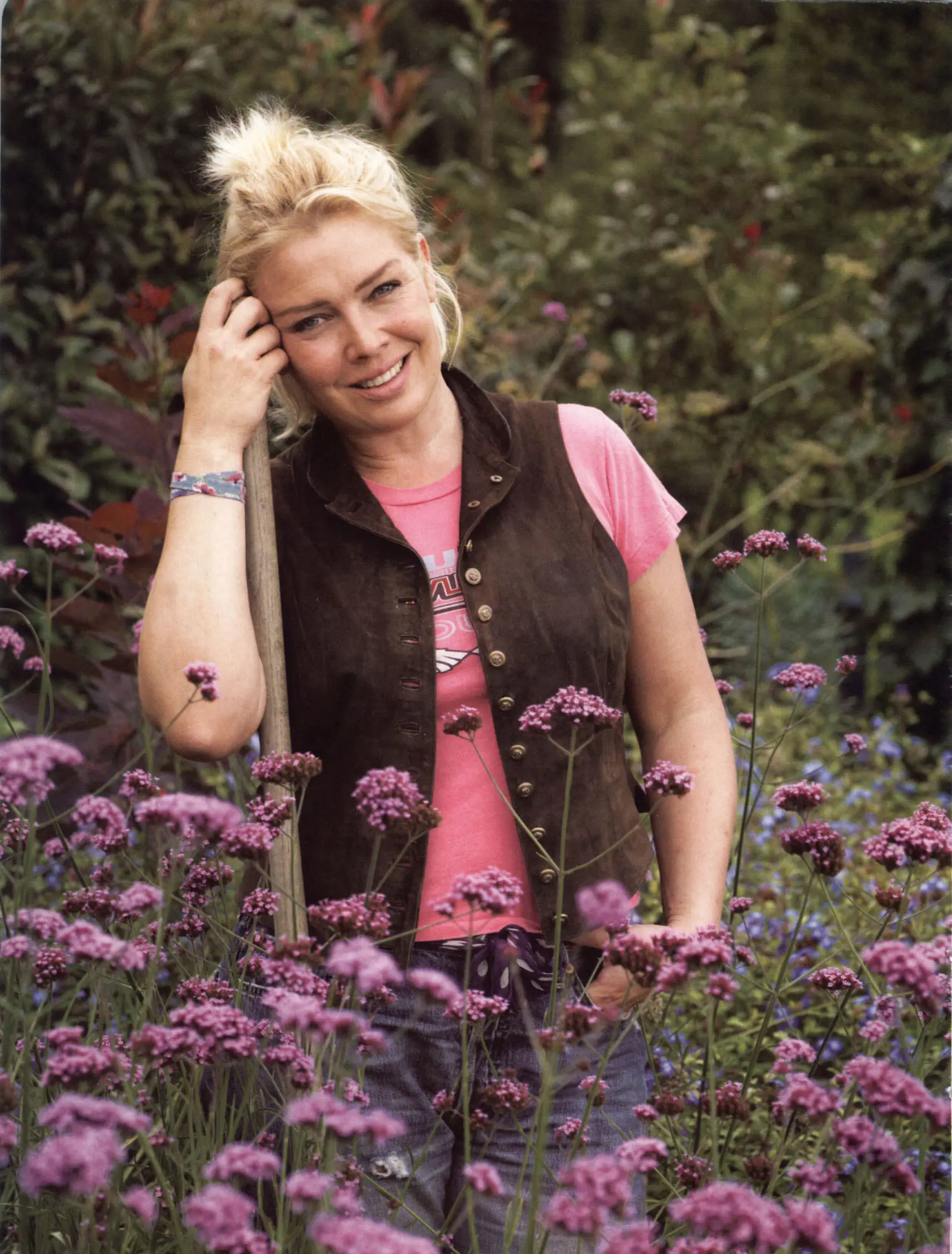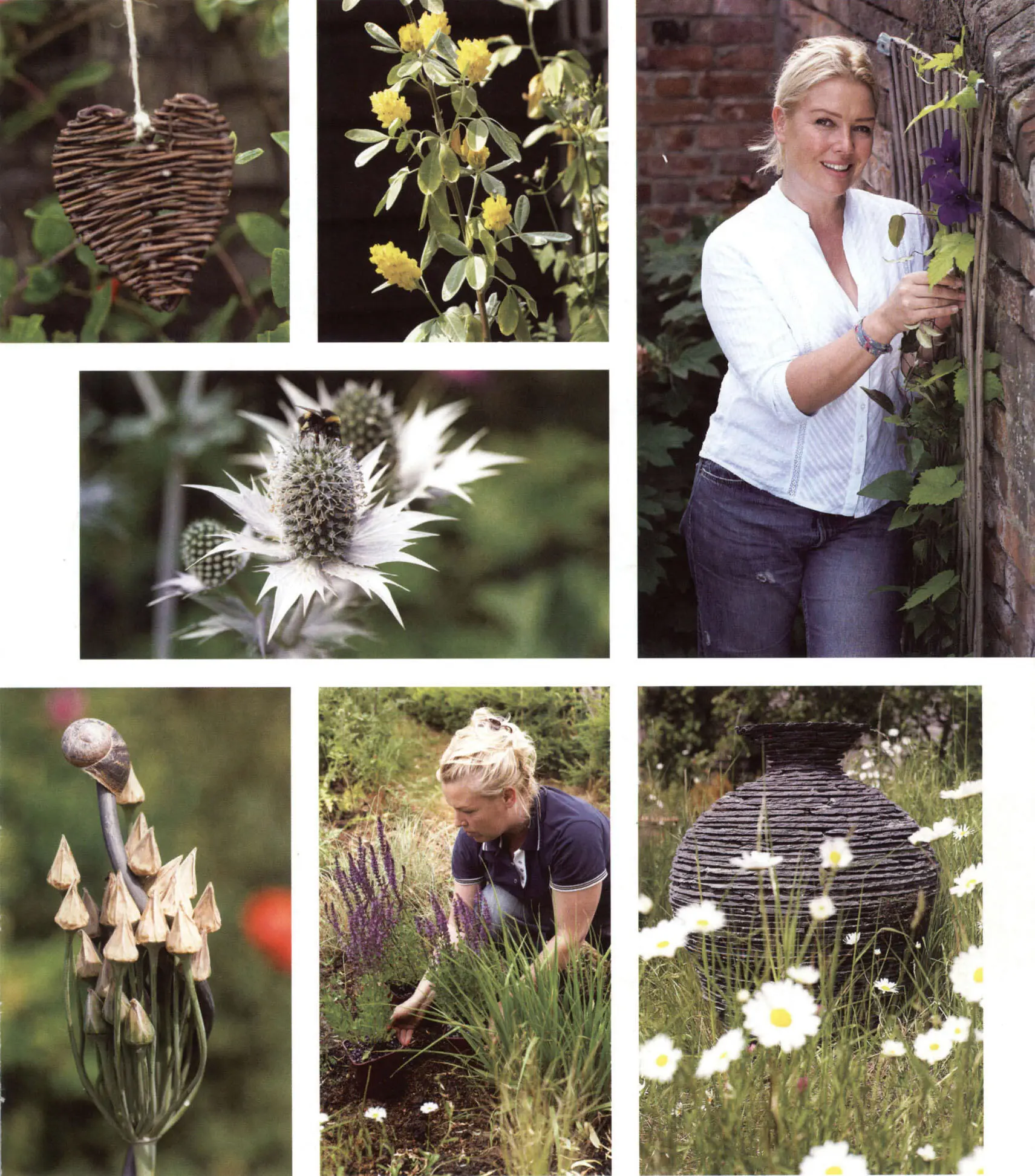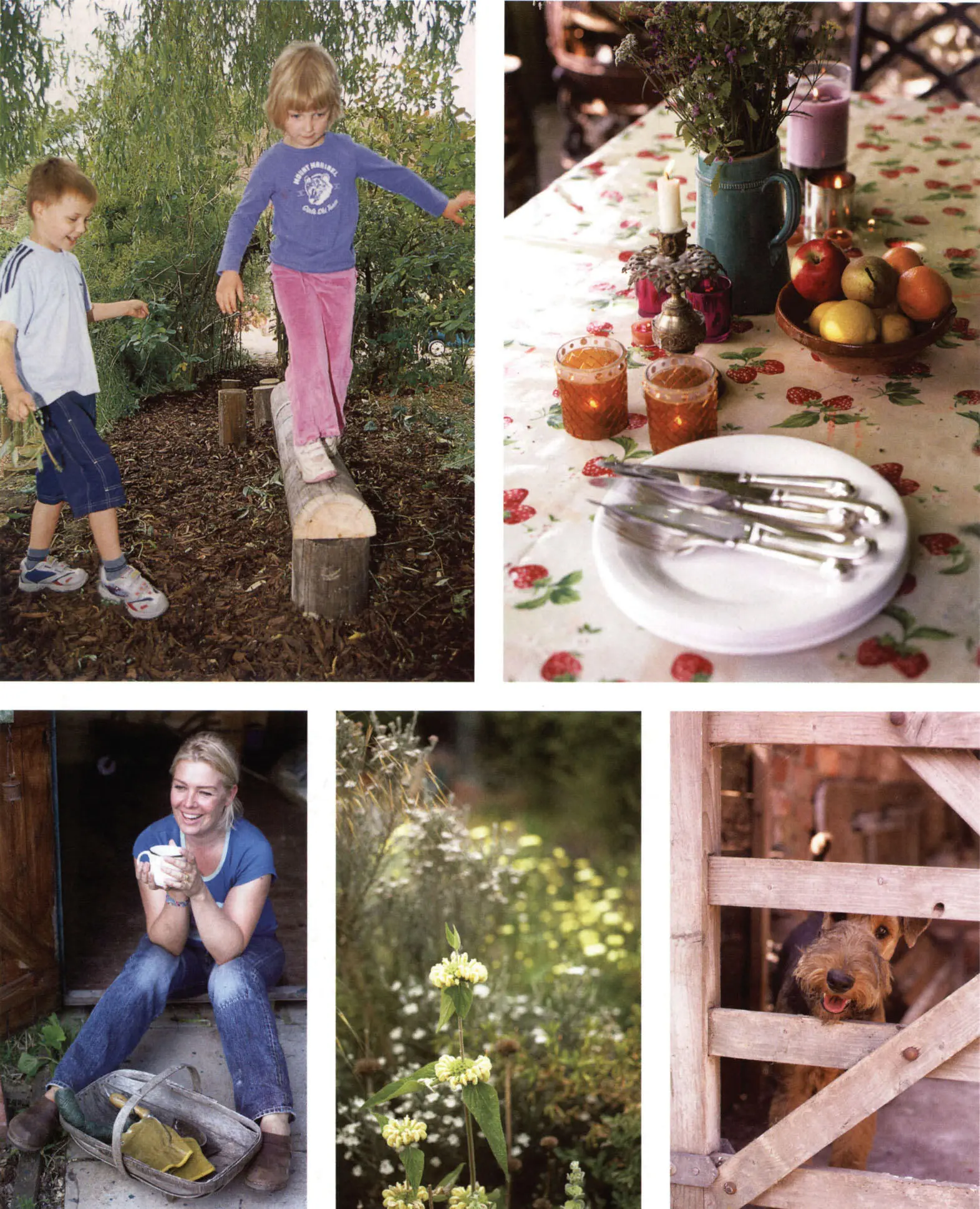
Collins
first-time gardener
A step-by-step guide for the gardening novice

Kim Wilde
Copyright
First published in 2006 by
Collins, an imprint of
HarperCollins Publishers Ltd
1 London Bridge Street
London SE1 9GF
The Collins website address is:
www.collins.co.uk
Collins is a registered trademark of HarperCollins Publishers Ltd
This paperback edition published in 2008
Text © 2006 Wildeflower Ltd
Editorial, pictures and design © 2006 HarperCollins Publishers Ltd except for pictures credited here.
A catalogue record for this book is available from the British Library.
Project manager: Emma Callery
Photographer: Nikki English
Designer: Bob Vickers
For HarperCollins
Commissioning editors: Angela Newton and Jenny Heller
Editor: Alastair Laing
Designer: Wolfgang Homola
Senior production controller: Chris Gurney
Kim Wilde herby asserts her moral right to be identified as the author of this work.
All rights reserved under International and Pan-American Copyright Conventions. By payment of the required fees, you have been granted the nonexclusive, non-transferable right to access and read the text of this e-book on screen. No part of this text may be reproduced, transmitted, downloaded, decompiled, reverse engineered, or stored in or introduced into any information storage retrieval system, in any form or by any means, whether electronic or mechanical, now known or hereinafter invented, without the express written permission of HarperCollins e-books.
Source ISBN 9780008108526
Ebook Edition © MARCH 2019 ISBN: 9780008108526
Version: 2019-04-10
HarperCollinsPublishers has made every reasonable effort to ensure that any picture content and written content in this ebook has been included or removed in accordance with the contractual and technological constraints in operation at the time of publication .
Contents
Cover
Title Page
Copyright
Introduction
PART 1: Gardening basics
What makes a good garden?
Aspect and light
Climate and weather
Soil
Basic botany
PART 2: Planning your garden
Assessing your requirements
Choosing a garden style
Drawing and developing a plan
The essentials of good garden design
Garden shapes and solutions
Typical problems and solutions
PART 3: Garden structure
Getting started
Choosing your materials
Boundaries
Patios and paths
Lighting
Water features
Raised beds
Pergolas, arbours and arches
Garden seating
Hardscape decoration
PART 4: Garden plants
Let the plants do the talking
Planning your planting
Form and texture
Colour, colour, colour!
Good planting
Containers
Spring containers
Summer containers
Winter containers
PART 5: Garden techniques
First things first
Organic gardening
Controlling pests and diseases
Forking and digging
Composting
Sowing seeds outdoors
Sowing seeds indoors
Planting annuals, perennials and shrubs
Planting trees
Laying turf
Watering
Feeding organically
Pruning and training
Propagating
Overwintering
Growing edibles
PART 6: Reference
The gardener’s calendar: spring
The gardener’s calendar: summer
The gardener’s calendar: autumn
The gardener’s calendar: winter
Kim’s recommended plants
Glossary
Acknowledgments
About the Publisher


Introduction
Gardening for me began as a therapy, a way to restore myself from a hectic schedule of travelling and performing. I vividly remember returning from a working trip abroad still dressed in tight black trousers and a shoulder-padded jacket and going straight out into the garden to train my pyracantha. I haven’t changed much and still often garden in completely inappropriate clothing such as nightdresses and platform mules! Now, as a busy working parent, my garden has never been so essential and has most definitely saved my sanity on more than one occasion. In our increasingly stressful and busy lives, a place to relax and re-charge our batteries is more and more important; modern living often sets a pace that can wear people down. A leafy sanctuary provides the perfect antidote, somewhere that offers peace and tranquillity, a place to unwind and share quality time with family and friends.
Gardens are not only good for the spirit, but good for the environment too. Plants absorb atmospheric pollutants as they produce food for themselves to grow, a process called photosynthesis, which at the same time releases oxygen back into the atmosphere. Plants also encourage wildlife, whose natural habitats are increasingly under threat from modern living. The simple pleasure of seeing birds, squirrels and ladybirds in the garden must not be underestimated. While being close to nature has a positive impact on our mental health, our gardens can become havens for wildlife, providing them with food, water and shelter without making any compromises to a chosen garden design.
The educational value of gardening should not be underestimated either, and schools are increasingly incorporating it into their teaching, often by creating wildlife or sensory gardens. In fact, I strongly believe that gardening for children is a natural; I’ve never come across a child yet who wasn’t completely entranced by a pot of garden soil! Encouraging them to appreciate their natural world is a greater gift than any bought in a toy shop. Research shows that gardening can no longer be treated as a trivial pursuit, but instead it can be used as a valuable tool in helping vulnerable adults overcome a wide range of health and social problems by boosting their self-esteem and confidence.
Gardening not only provides the feel-good factor, but is a wonderful way to exercise. Of course, by this I don’t mean a gentle potter in and out of the shed. Like all moderate cardiovascular exercise, it can help lower blood pressure and even heart disease and strokes. Just being out in the sunshine helps the body to make vitamin D, which is essential for healthy bones.
First-time gardening
First of all decide what your level of commitment is. Do you have the budget and the energy for a whole garden makeover, or do you simply want to make the best of what you’ve got? Write down your garden wish list, not forgetting to include the more practical elements like where the shed or the washing line goes, but don’t restrict your imagination.
Think, too, about how you would like to style your garden. For instance, if you live in the country, you could reflect the natural, rural surroundings by using timber fencing, old bricks and rustic arches, setting the perfect stage for roses, lavender and marigolds. Urban homes often suit garden styles that reflect the design and materials of the house, and perhaps the use of ‘architectural’ plants with strong place and presence; very small urban gardens may even reflect the styling from within the house.
Читать дальше
















